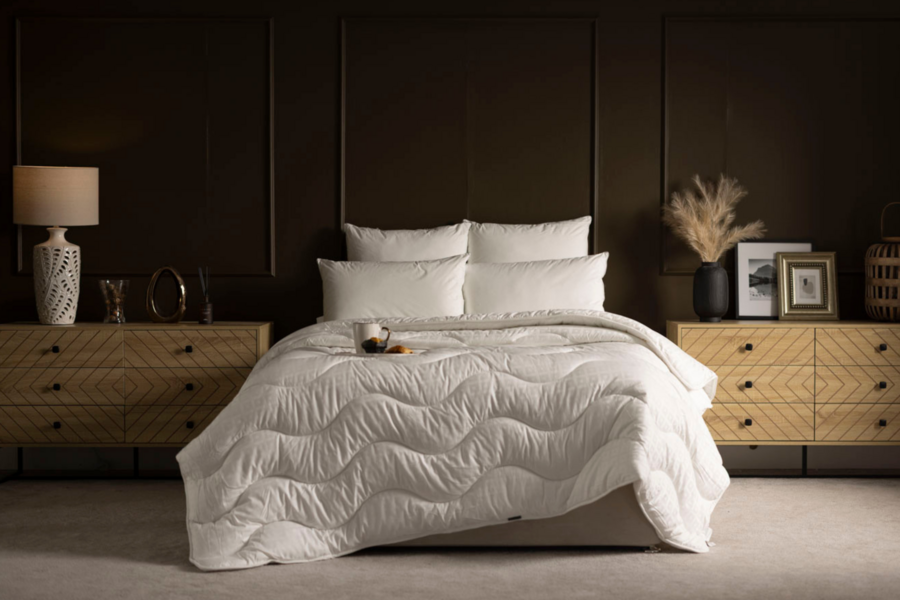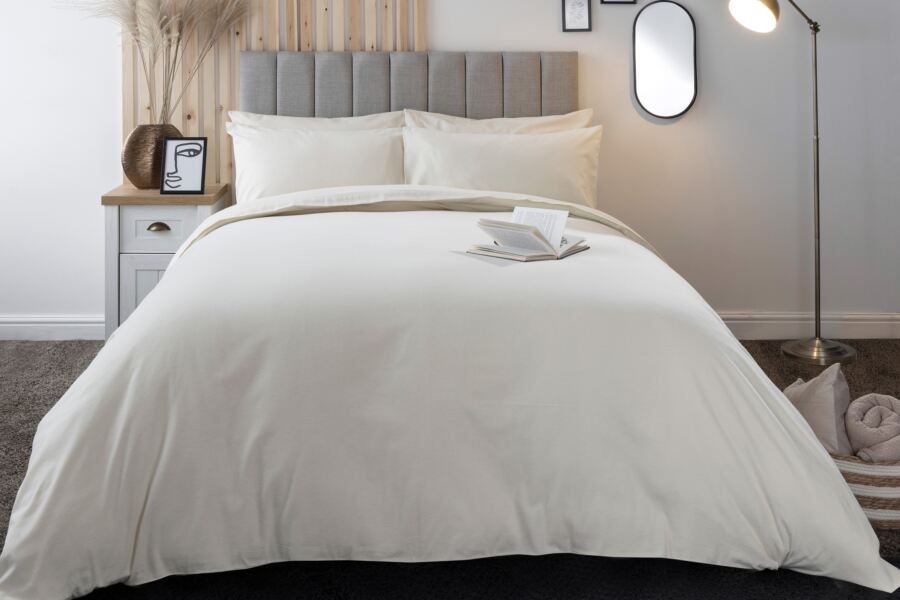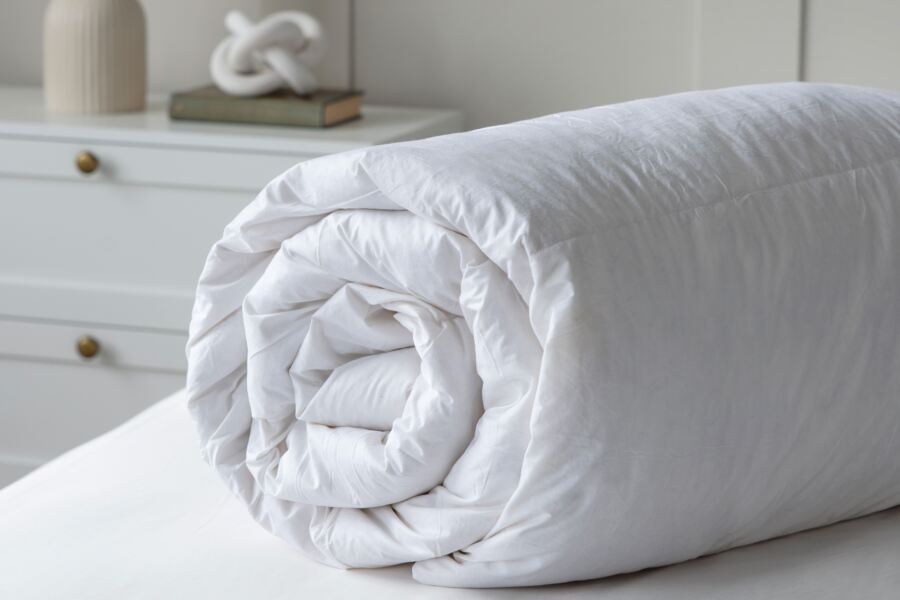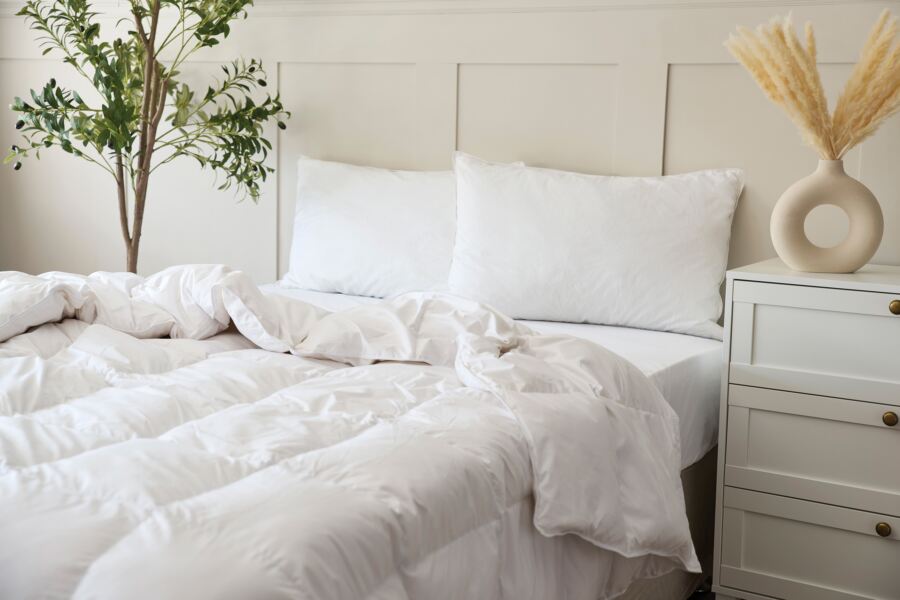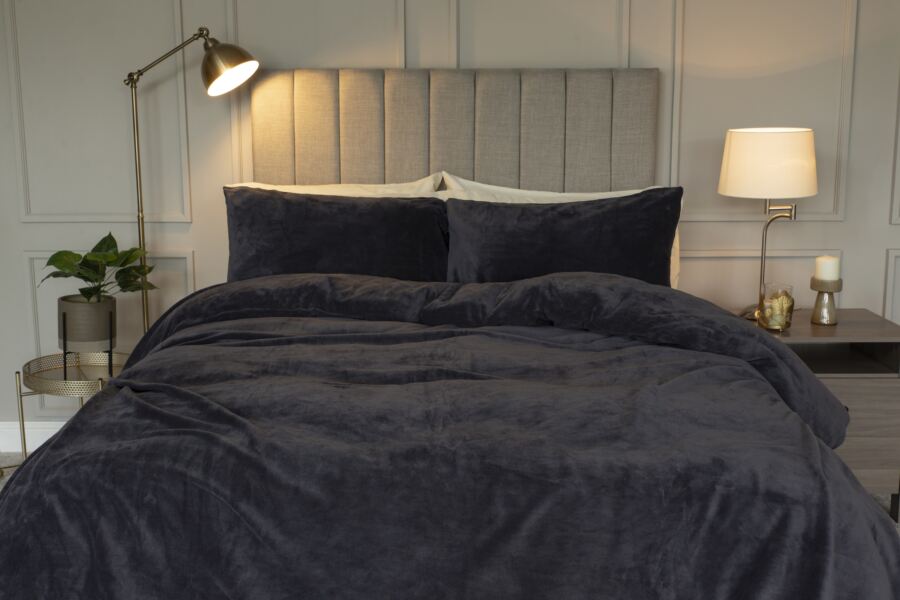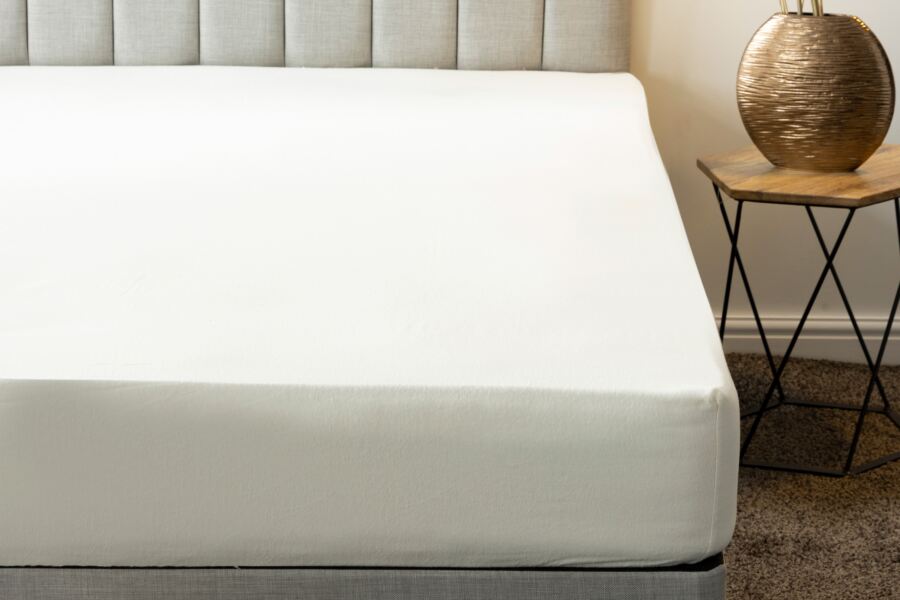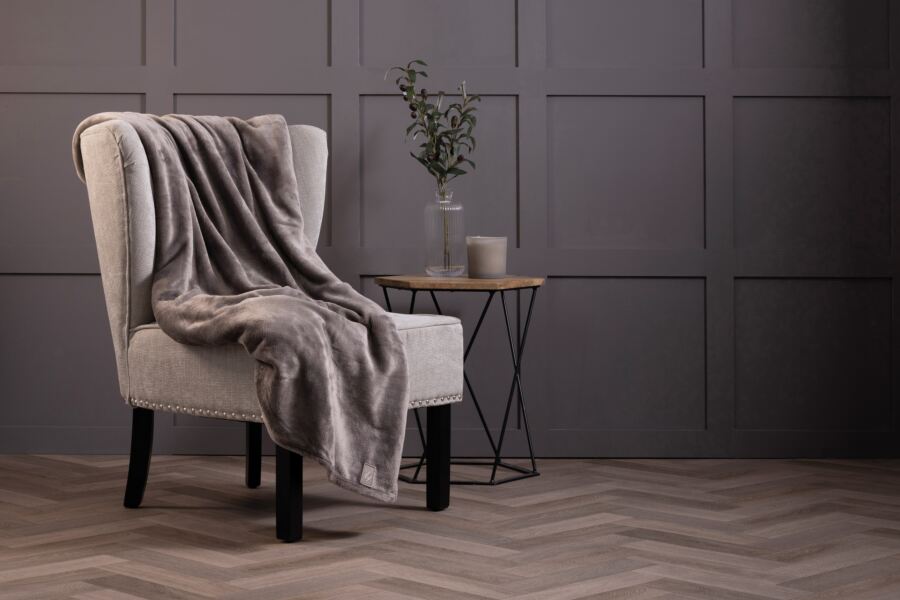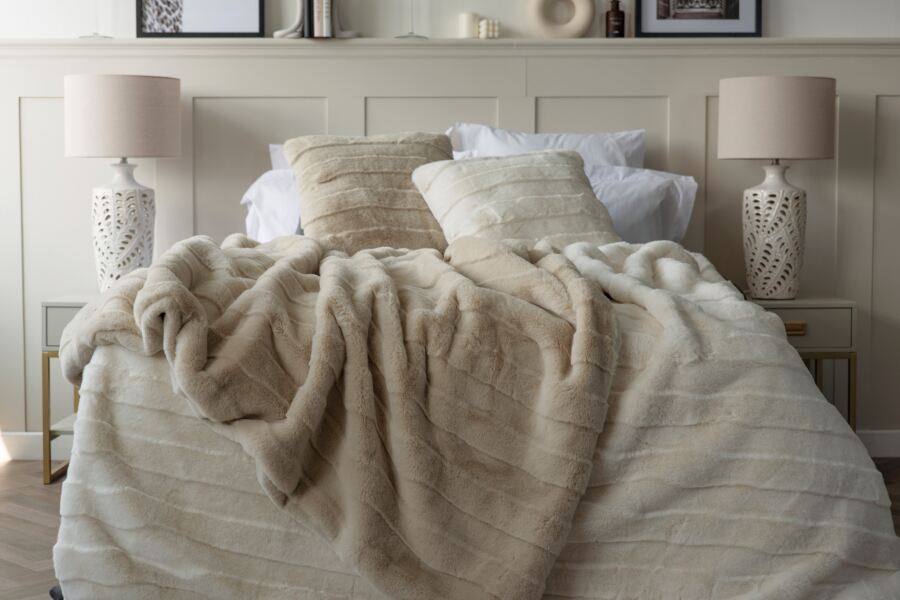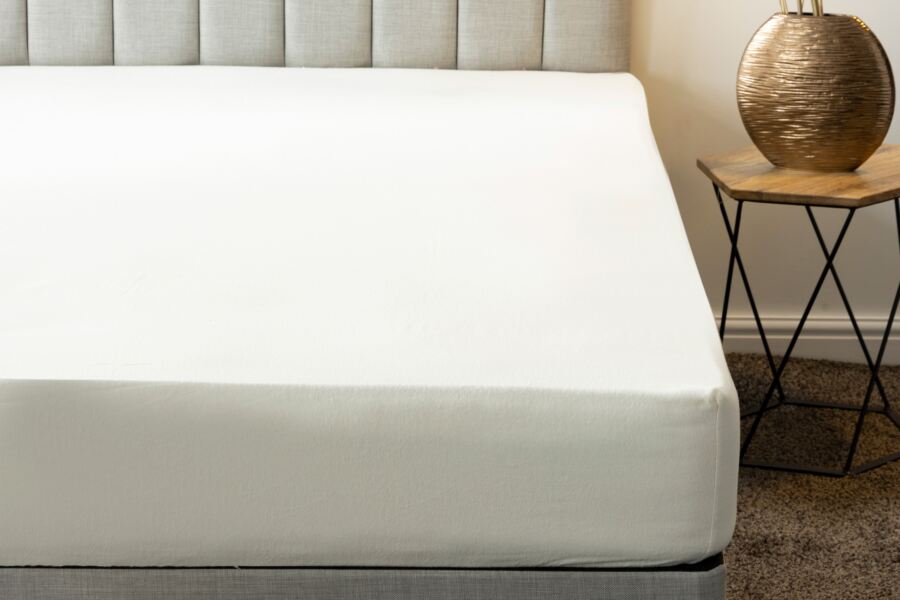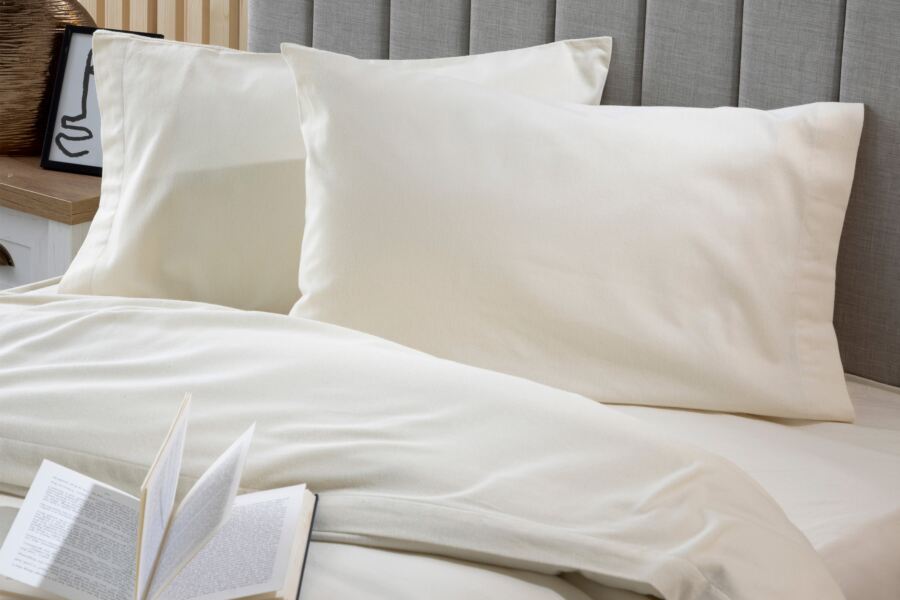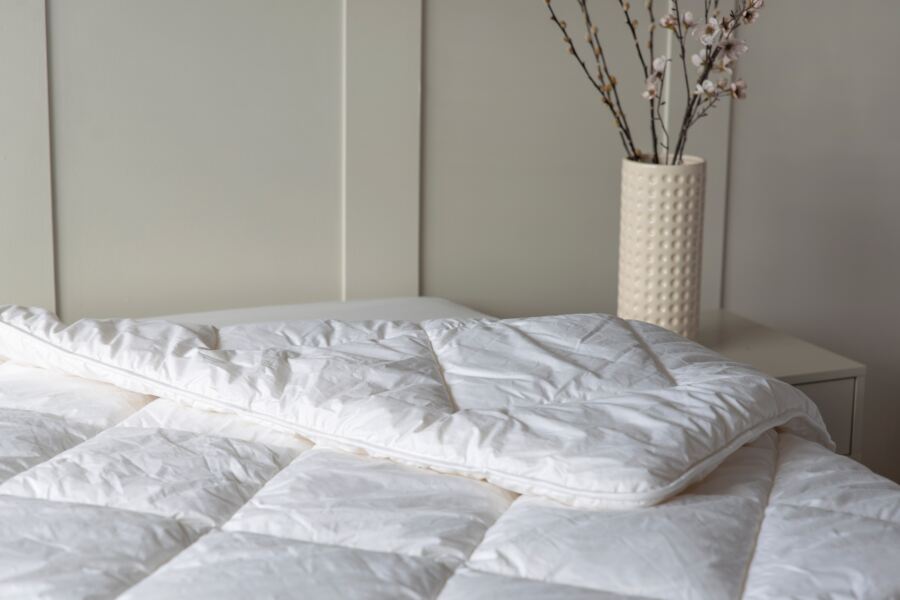Table of Contents
- Start with insulation at your skin: sheets and base layers
- Duvets, fills and tog ratings
- Layering strategy: flexibility over extremes
- Heating wisely: balancing comfort and bills
- Practical checks and tips before winter settles in
As the nights draw in and the air turns crisp, creating a cosy and efficient sleep environment becomes essential. At The Sleep Charity, we understand how the right combination of bedding layers, warm materials and thermals can help you sleep more comfortably as temperatures plummet (we’re thinking brushed cotton, duck down and wool) while keeping those energy bills in check.
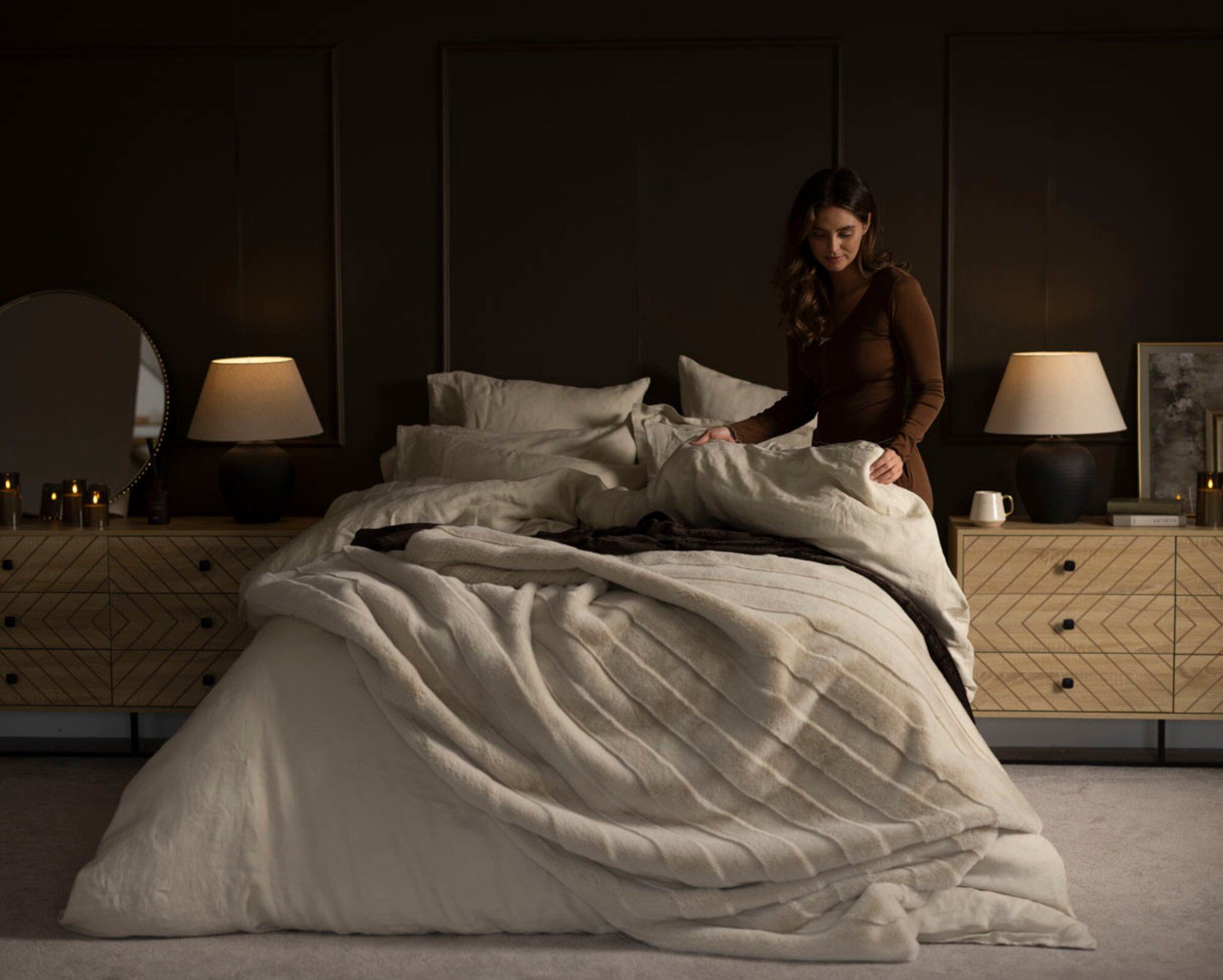
Start with insulation at your skin: sheets and base layers
Even before you think about duvets, the sheets you choose matter. Materials with a snug, slightly brushed finish (such as brushed cotton) create tiny air pockets that trap warmth close to the body. Belledorm offers a brushed cotton sheet collection that is described as ‘luxurious and soft … adaptable, giving warmth on colder nights.’
Plain percale weaves are more breathable, which is excellent in summer - but in winter, you want a denser weave (for instance, cotton sateen) so less heat escapes. Belledorm has made it easy to find the perfect winter bedding with a great section named ‘Best Sheets for Someone Who Is Always Cold.’ This features fleece, or brushed finishes flannel and brushed cotton bedding.
Regarding thread count: For winter warmth the fabric quality and weave are more important than extreme thread counts. A well-made cotton between 200 and 400 thread count is a good balance - higher doesn’t always mean warmer, especially if the fabric is lightweight or very densely woven in a way that impairs breathability.
Duvets, fills and tog ratings
Once your base layer is well chosen, the duvet is your core insulation. Here are some pointers:
- Duck down / feather fills: Natural down is excellent for trapping warm air while remaining relatively lightweight. A 13.5 tog duck down and feather duvet is a great winter option.
- Wool duvets (or wool-blend fills): Wool is naturally temperature-regulating, wicking moisture while still retaining warmth. It’s a popular choice in colder climates for its breathability and resilience.
- Tog rating guidance: A tog of around 13 -15 is often recommended for the coldest winter nights, provided your bedroom is cool or moderately heated. If your home is very well-insulated or you tend to sleep hot, a slightly lower tog (10–12) may suffice, with layering.
Also consider pairing two duvets (a lighter one and a heavier one) and combining them into a higher effective tog only when needed.
Layering strategy: flexibility over extremes
Rather than relying on a single ultra-thick duvet, layering gives you flexibility. For instance:
- A base layer (brushed cotton or flannel sheet)
- A lighter blanket or throw (wool, fleece or acrylic) for milder nights
- A thick duvet (13.5 tog or equivalent) for deep winter
This allows you to adjust if temperatures fluctuate, or if you share a bed with someone whose thermal comfort is different.
Also, consider mattress toppers, under-blankets or base wraps that can add insulation from below, ensuring your bed doesn’t lose warmth into the mattress.
Heating wisely: balancing comfort and bills
Many people worry that turning up the heat is the only way to stay cosy - but in fact, looped insulation (via bedding) is a more energy-efficient solution. A well-insulated bed lets you keep your room temperature modest (say 16–18 °C) while still staying warm under the covers.
Make sure windows are sealed, curtains are used at night to reduce heat loss, and radiator flow is balanced. Avoid overheating the room, which can dry the air and cause you to wake feeling uncomfortable.
Lisa Artis, Deputy CEO of The Sleep Charity, said: “In winter, the key to comfortable sleep is not how hot your room is, but how well your bed can hold warmth where you need it - at your skin and under your duvet. Good bedding materials and a flexible layering approach allow you to sleep warmly without wasting energy.”
Practical checks and tips before winter settles in
- Clean bedding before the cold fully sets in (cotton warmth is better when clean and fluff-restored).
- Shake and air natural duvets (down / wool) periodically to maintain loft.
- Avoid duvet covers that are too tight or compress the fill - allow the fill to ‘breathe.’
- Monitor humidity: very dry air can feel colder; humidifier or natural moisture sources (e.g. houseplants) can help stop the air getting too dry.
- Consider having a warm bath before bedtime. It will warm you up but as your body temperature starts to drop, will help you to feel sleepy.
So, for a snug, energy-efficient winter sleep, begin with layers (starting at your sheets), use quality materials such as brushed cotton and natural fills, choose an appropriate tog rating, apply layering flexibility, and moderate your room heating. A well-designed sleep environment is one of the most effective ways to stay warm and well rested through winter.
www.thesleepcharity.org.uk

